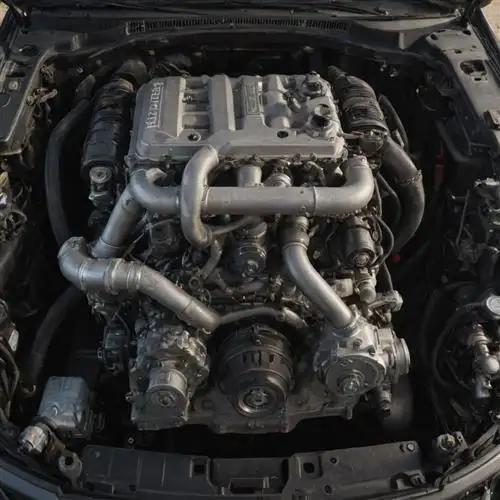
Staying on Top of Your Tundra's Maintenance Schedule
Owning a Toyota Tundra is a rewarding experience, but it requires diligent maintenance to ensure its longevity and peak performance. Staying on top of your Tundra's maintenance schedule is crucial, as it not only preserves the value of your investment but also ensures your safety on the road. In this section, we'll delve into the importance of adhering to the recommended maintenance schedule and provide insights into the key areas you should focus on.
First and foremost, it's essential to familiarize yourself with the manufacturer's recommended maintenance schedule for your Tundra. This schedule outlines the specific intervals at which various service items should be checked, replaced, or maintained. From oil changes and tire rotations to brake inspections and fluid flushes, each task is designed to keep your Tundra running smoothly and efficiently.
One of the most critical maintenance items is the oil change. Regular oil changes not only keep your Tundra's engine well-lubricated but also help prevent premature wear and tear. It's recommended to change your Tundra's oil every 5,000 to 10,000 miles, depending on the type of oil and driving conditions. Neglecting this routine task can lead to increased engine wear and reduced fuel efficiency.
Another essential maintenance task is the tire rotation. Rotating your Tundra's tires at the recommended intervals helps ensure even wear, improving traction and extending the life of your tires. This is especially important for larger trucks like the Tundra, which can put more stress on their tires. Typically, tire rotations should be performed every 5,000 to 7,500 miles.
Brakes are another crucial component that requires regular attention. Your Tundra's brake pads and rotors should be inspected at the recommended intervals, and any necessary replacements or adjustments should be made promptly. Neglecting brake maintenance can lead to decreased braking performance, increased stopping distances, and potential safety hazards.
In addition to these routine maintenance tasks, it's also important to stay vigilant for any unusual noises, vibrations, or warning lights that may indicate a more serious issue. Addressing these problems quickly can help prevent further damage and costly repairs down the line.
Detecting and Addressing Common Tundra Maintenance Issues
As a Toyota Tundra owner, you understand the importance of maintaining your vehicle to ensure its longevity and performance. One of the key aspects of Tundra maintenance is being able to identify and address common issues before they escalate. In this comprehensive guide, we'll delve into the most prevalent Tundra maintenance concerns and provide you with the knowledge to proactively address them.
Engine and Transmission Problems: The Tundra's powerful engine and robust transmission are the backbone of its performance. Regularly monitoring for signs of oil leaks, unusual noises, or hesitation during gear changes can help you identify potential issues early. Promptly addressing problems like worn spark plugs, clogged fuel injectors, or transmission fluid degradation can prevent costly repairs down the line.
Suspension and Steering Concerns: The Tundra's suspension and steering components are essential for a smooth and responsive driving experience. Keep an eye out for uneven tire wear, wandering during highway driving, or a pulling sensation, as these may indicate issues with the ball joints, tie rods, or wheel alignment. Addressing these problems promptly can improve the Tundra's handling and safety.
Brake System Maintenance: The Tundra's braking system is a critical safety feature, and it's essential to maintain it regularly. Listen for any unusual noises, such as grinding or squeaking, during braking, as they may indicate worn brake pads or rotors. Additionally, regularly inspecting the brake fluid level and condition can help detect potential issues before they become dangerous.
Electrical and Electronic Issues: The Tundra's advanced electronics and electrical systems are integral to its functionality. Be mindful of any warning lights on the dashboard, as they may indicate problems with the battery, alternator, or other electrical components. Addressing these issues promptly can prevent more significant problems, such as electrical system failures or battery drainage.
Cooling System Maintenance: The Tundra's cooling system plays a vital role in preventing engine overheating, which can lead to severe damage. Keep an eye out for any coolant leaks, and be sure to replace the coolant at the recommended intervals. Neglecting the cooling system can result in costly engine repairs.
Investing in Preventative Maintenance for Your Tundra
Maintaining your Toyota Tundra is crucial to ensure its longevity and optimal performance. Preventative maintenance is the key to avoiding costly repairs down the line. By addressing potential issues before they escalate, you can save time, money, and the hassle of dealing with unexpected breakdowns. In this section, we'll explore the importance of investing in preventative maintenance for your Tundra, and provide practical tips to keep your truck running smoothly.
Regular oil changes are the foundation of preventative maintenance for your Tundra. Toyota recommends changing the oil every 5,000 to 10,000 miles, depending on your driving conditions and the oil type used. Adhering to this schedule not only keeps your engine lubricated but also helps extend its lifespan. Be sure to use the recommended oil grade and quality to ensure optimal engine performance.
Tire rotation and alignment are also crucial components of preventative maintenance. Rotating your tires at the recommended intervals, usually every 5,000 to 7,500 miles, helps ensure even wear and tear, improving fuel efficiency and ride quality. Additionally, regular alignment checks can identify and correct any issues with your Tundra's suspension, steering, and wheel positioning, reducing the risk of uneven tire wear and improving handling.
Brake maintenance is another vital aspect of preventative care. Regularly inspecting your brakes, including the pads, discs, and calipers, can help identify issues before they become more serious. Replacing worn brake components as needed helps maintain the integrity of your braking system, enhancing your safety and ensuring a smooth, responsive ride.
Lastly, don't neglect the importance of routine inspections and fluid flushes. Your Tundra's transmission, differentials, and cooling system all require periodic attention to keep them functioning at their best. Flushing and replacing fluids as recommended by Toyota helps prevent premature wear and tear on these critical components, extending their lifespan and ensuring your Tundra remains reliable for years to come.
Maximizing Your Tundra's Performance Through Proper Maintenance
Maintaining your Toyota Tundra is crucial to ensuring its longevity, performance, and reliability. Beyond the routine oil changes and tire rotations, there are several essential maintenance tasks that can significantly impact your Tundra's performance and overall condition. By understanding these maintenance requirements, you can proactively address potential issues and keep your Tundra running at its best.
One of the most vital components to monitor is the engine. Regular engine tune-ups, which involve spark plug replacement, engine air filter changes, and thorough inspections, can optimize your Tundra's power output and fuel efficiency. Keeping an eye on the engine oil level and condition is also paramount, as fresh oil lubricates critical engine components and helps prevent premature wear.
The braking system is another crucial area that requires meticulous attention. Regularly inspecting and, if necessary, replacing brake pads, rotors, and calipers can ensure your Tundra stops on a dime, even when fully loaded. Proper brake maintenance not only enhances safety but also helps maintain the integrity of the entire braking system.
Suspension components, such as shocks, struts, and bushings, play a vital role in your Tundra's handling and ride quality. Identifying and addressing any issues with these components through routine inspections and timely replacements can significantly improve the truck's responsiveness and overall driving experience.
Equally important is the condition of your Tundra's tires. Ensuring proper tire inflation, rotation, and alignment can positively impact fuel efficiency, tread life, and handling characteristics. Consider investing in high-quality tires that are designed for the demands of your driving conditions and terrain.
Finally, don't neglect the cooling system. Regular coolant flushes and inspections of the radiator, hoses, and water pump can prevent overheating issues and ensure your Tundra's engine runs at optimal temperatures, even under the most demanding conditions.
Preparing Your Tundra for Seasonal and Environmental Challenges
As the seasons change and the elements test the limits of your Toyota Tundra, it's crucial to prepare your trusty workhorse for the challenges that lie ahead. From braving the blistering heat of summer to weathering the icy grip of winter, your Tundra demands a comprehensive maintenance plan to ensure peak performance and longevity. In this article, we'll delve into the strategies and techniques that will keep your Tundra running strong, no matter the conditions.
Summer Readiness: The scorching summer sun can take a toll on your Tundra's components, from the cooling system to the tires. Begin by ensuring your coolant level is topped up and the system is functioning optimally. Consider upgrading to a high-quality synthetic coolant for enhanced heat resistance. Check the condition of your tires, and if necessary, rotate or replace them to maintain optimal traction and handling in the summer heat.
Winter Woes: As the temperature drops and snow begins to accumulate, your Tundra must be ready to tackle the elements. Inspect your battery and have it tested to ensure it can withstand the demands of cold-weather starting. Replace worn-out wiper blades and stock up on high-quality winter-specific windshield wiper fluid to keep your visibility clear. Don't forget to check the condition of your all-season or winter tires, as proper tire choice can make all the difference on icy and snowy roads.
Maintaining Underbody Protection: Your Tundra's underbody is the unsung hero, shielding critical components from the ravages of mud, debris, and corrosive substances. Regularly inspect the undercarriage for any signs of damage or wear, and consider applying a protective coating or sealant to safeguard against the elements. This simple step can extend the lifespan of your Tundra's vital components and prevent costly repairs down the line.
Embracing the Secrets of Toyota Tundra Experts - The Best Modifications Revealed can also be a game-changer when it comes to preparing your truck for seasonal challenges. From specialized suspension upgrades to enhanced cooling systems, these expert-approved modifications can help your Tundra tackle any terrain or climate with ease.
















